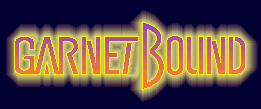Objectives
To distinguish:
⁃ physical properties from chemical
⁃ physical from chemical changes
⁃ mixtures from compounds
⁃ metals from nonmetals
To state the operational definition of:
⁃ a compound
⁃ an element
⁃ a mixture
Procedure
1.) Combine the copper turnings and sulfur powder and examine the mixture with a hand lens. Record your observations in Table 5.1. Transfer the mixture to a 10mL test tube. Heat the mixture complete. Record your observations.
2.) Write down properties of 5cm strip of magnesium ribbon. Hold one end of the strip over a burner flame using crucible tongs until the ribbon ignites. (CAUTION: Do not look directly at the burning magnesium. Keep the burning magnesium at arm's length.) Record your observations. Let the combustion product fall on a watch glass. Compare with original magnesium ribbon. Transfer combustion product to small beaker then add 3mL distilled water. Stir solution and add red and blue litmus. Record your observations.
3.) Get copper wire about 14cm long, 2mm diameter and form a loop at one end (see pic). This will serve as a deflagrating spoon. Spoon some sulfur powder, enough to fill the loop. Hold this over the burner flame. Observe the burning sulfur. Dissolve combustion product by holding the end of the loop inside a vial with 3mL water. Add red and blue litmus to resulting solution. Record your observations.
4.) Place 2 or 3 iodine crystals in a 150mL beaker and place this on a wire gauze and iron ring. Over the beaker, place an evaporating dish with a small amount of water. With small flame, heat crystals and observe what happens. Examine the bottom of evaporating dish after it cools. Record your observations.
5.) Put a few copper nitrate crystals into a clean, dry 10mL test tube. Hold the test tube w/ holder and heat gently in a burner flame. (CAUTION: Never point the mouth of the test tube at anyone while heating the test tube.) Watch the test tube for changes, periodically removing the tube from the flame to note any odor that evolves. When the heating is complete, observe the reaction products then Record your observations
6.) Put the sodium chloride and sand mixture on a piece of clean paper. Examine the mixture w/ magnifying glass. Record your observations. Transfer the mixture to a clean 150mL beaker. Add 30mL of distilled water and stir the mixture with a glass rod.
Filter the mixture: fold a piece of filter paper in half and fold again so that the edges do not meet but form an angle of abt 5-10 degrees
Place evaporating dish below the funnel, and pour the salt/sand/water mixture into the funnel. The liquid that passes through the filter paper is called the filtrate. Heat the dish gently until filtrate has evaporated completely. Allow dish to cool. Examine dry residue in evaporating dish and wet residue on filter paper. Record your observations. Throw evaporating dish together w/ the sand.
Submit dry residue to teacher.
| Chemical System | Observation | Analysis |
| Copper turnings + sulfur powder examined w/ hand lens. heated together. | ||
| magnesium ribbon: burned in air, combustion product, dissolved in water, solution tested with litmus paper. | ||
| Sulfur power: burned in air, combustion product, dissolved in water, solution tested with red and blue litmus paper | ||
| Iodine crystals: heated, vapor cooled | ||
| copper nitrate heated | ||
| sodium chloride and sand mixture: examined w/ hand lens. mixed with water. filtered. filtreate allowed to evaporate. |
QUESTIONS
1) For each change observed from steps 1-6 indicate whether the change was physical or chemical. Explain.
| Chemical System | Kind of change | reason |
|
2) What's the diff. between chem and physical problems?
3) Using the results of your exp., state the diff. between a chemical change and a physical change.
4) How can you differentiate compounds from mixtures? A metal from nonmetal.
5)Give the operational definition of a compound, an element, and a mixture.
//sorry guys im really tired and i don't have a scanner


No comments:
Post a Comment